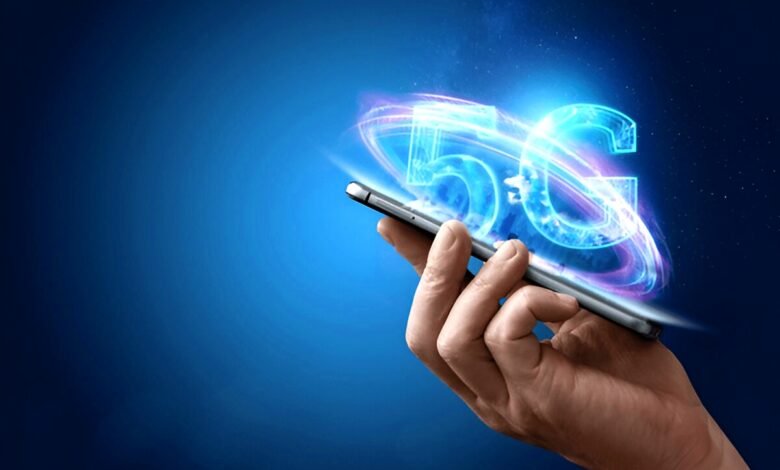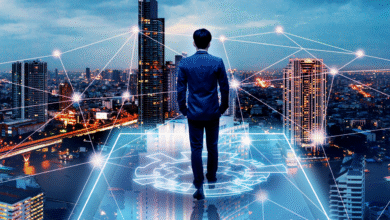
The science behind 5G is a groundbreaking advancement in wireless technology, promising ultra-fast speeds, low latency, and enhanced connectivity. As the fifth-generation mobile network, 5G is set to revolutionize industries, from healthcare and transportation to entertainment and smart cities. This article delves into the core principles of 5G technology, explaining how it works and why it is crucial for the future of communication.
What is 5G?
5G, or fifth-generation wireless technology, is the latest iteration of mobile networks, succeeding 4G LTE. It is designed to deliver higher data speeds, support massive device connectivity, and reduce latency. Unlike previous generations, 5G operates on multiple spectrum bands, including low-band, mid-band, and high-band (millimeter wave or mmWave) frequencies, making it significantly more efficient and capable.
Key Features of 5G
- Higher Data Speeds—5G can reach speeds up to 10 Gbps, enabling seamless streaming, gaming, and data transfer.
- Ultra-Low Latency—Response times are reduced to as low as 1 millisecond, crucial for real-time applications.
- Massive IoT Connectivity—Supports millions of devices per square kilometer, fostering the Internet of Things (IoT) ecosystem.
- Improved Network Efficiency—More reliable and energy-efficient, reducing congestion and improving overall performance.
How 5G Works: The Technology Behind It
The science behind 5G involves several innovative technologies working together to enhance wireless communication. These include millimeter waves, small cells, beamforming, massive MIMO, and network slicing.
Millimeter Waves (mmWave)
One of the most significant changes in 5G is the use of high-frequency millimeter waves, ranging from 24 GHz to 100 GHz. These waves can carry vast amounts of data at high speeds but have limited range and difficulty penetrating obstacles like buildings and trees. To overcome this limitation, 5G networks deploy small cells.
Small Cells
Small cells are miniature base stations placed strategically to enhance coverage and network capacity. Unlike traditional large cell towers, small cells are deployed in urban areas, stadiums, and other high-density locations to improve signal strength and connectivity.
Beamforming
Beamforming is a signal processing technique that directs signals to specific users instead of broadcasting in all directions. This targeted approach enhances network efficiency, reduces interference, and ensures stable connections, especially in high-traffic areas.
Massive MIMO (Multiple Input, Multiple Output)
Massive MIMO is an advanced antenna technology that utilizes multiple antennas to transmit and receive data simultaneously. By increasing the number of antennas on a base station, 5G networks can handle more connections and deliver faster data speeds without congestion.
Network Slicing
Network slicing allows operators to create virtual networks customized for different applications. For instance, one slice can be optimized for gaming, another for industrial automation, and another for emergency services. This flexibility enhances the efficiency and reliability of 5G networks.
Why 5G Matters: Real-World Applications
The implementation of 5G technology is not just about faster internet—it has transformative implications across various industries.
Enhanced Mobile Experience
With 5G, users can enjoy ultra-high-definition streaming, lag-free gaming, and instant cloud access. Augmented reality (AR) and virtual reality (VR) applications will become more immersive and accessible.
Internet of Things (IoT)
5G is crucial for the expansion of IoT, enabling smart homes, smart cities, and industrial automation. Connected devices, from wearable health monitors to self-driving cars, will operate more efficiently with real-time data exchange.
Healthcare Revolution
Telemedicine, remote surgeries, and real-time patient monitoring will be enhanced with 5G’s low latency and high reliability. Doctors can perform surgeries using robotic arms from miles away, and patient data can be transmitted instantly for better healthcare management.
Autonomous Vehicles
Self-driving cars rely on real-time communication to navigate safely. 5G enables instant data exchange between vehicles, traffic signals, and infrastructure, reducing accidents and improving traffic flow.
Smart Cities
5G is essential for smart city initiatives, enabling real-time monitoring of traffic, pollution, and public services. Intelligent transportation systems, energy-efficient grids, and emergency response services will become more effective.
Industrial and Manufacturing Advancements
5G-powered automation in factories will lead to more efficient production lines, predictive maintenance, and safer work environments. Robots and AI-driven machinery will communicate seamlessly, boosting productivity.
Challenges and Future of 5G
While the science behind 5G presents numerous benefits, it also comes with challenges.
Infrastructure Development
The deployment of 5G requires a vast network of small cells and fiber optic cables, which is costly and time-consuming. Governments and telecom companies must invest heavily in infrastructure.
Security Concerns
With more devices connected to the network, cybersecurity threats become a significant concern. Protecting sensitive data from cyberattacks and breaches is crucial.
Health and Environmental Impact
There have been concerns about the potential health effects of 5G radiation. However, scientific studies have not found conclusive evidence of harmful effects. Further research is needed to address public concerns.
Global Adoption
The transition to 5G is not uniform worldwide. Some countries are advancing rapidly, while others face regulatory, economic, and political barriers to adoption.
Conclusion
The science behind 5G is reshaping the future of connectivity, offering unparalleled speed, efficiency, and possibilities. As industries integrate 5G into their operations, society will experience significant advancements in healthcare, transportation, and automation. Despite challenges, the potential of 5G far outweighs the hurdles, making it a transformative force in the digital era. As technology continues to evolve, embracing 5G will be essential for a smarter, more connected world.







